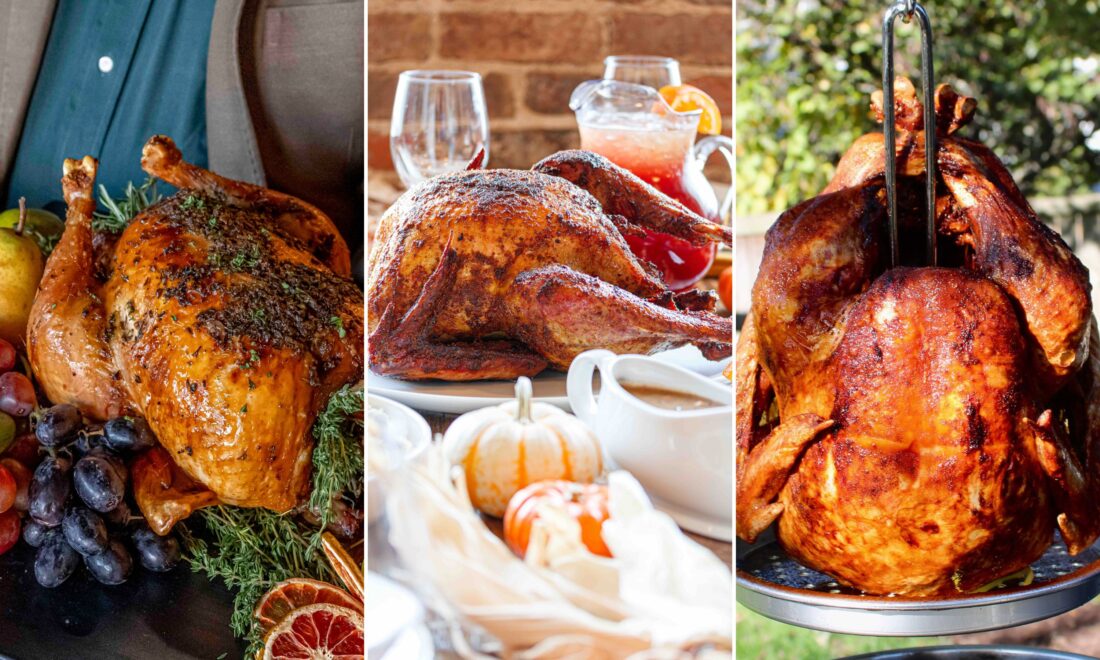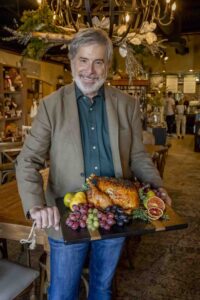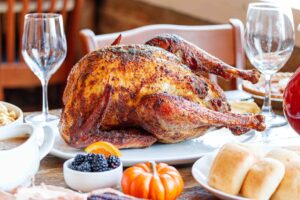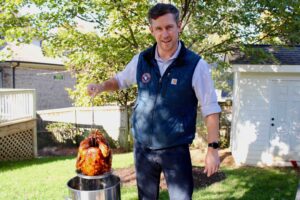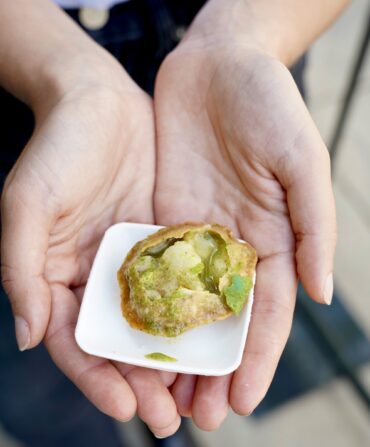Hide the carving knives. Opinions run strong as to the best way to prepare the most delicious Thanksgiving turkey, and three top Nashville restaurateurs are mincing garlic, but not words, when it comes to the cooking method they believe is superior.
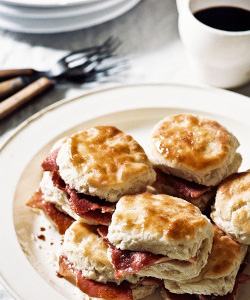
Raising a drumstick for old-school roasting is Jim Hagy, whose Chef’s Market Cafe & Takeaway provides a whopping 450 gobblers for Nashville-area family feasts each holiday season. “Thanksgiving is a holiday about tradition, and a traditional roasted turkey at the center of the table is the best way to celebrate,” he says.
Hagy’s secret weapon is herb butter—and plenty of it—rubbed under the skin. “That’s a lesson learned from watching people, myself included, ruin a perfectly good turkey by leaving the flavor on the surface,” he says. Another pro tip? Don’t dry out the meat by repeatedly opening the oven door to baste. “The herb butter locks in the moisture under the skin where it belongs—you’ll get a golden, crispy skin that makes all that oven-opening look like a fool’s errand,” he says. “And don’t overlook the lemon and onion stuffed inside. They’re quietly pulling their weight, locking in a hint of flavor.”
Wielding a wishbone for smoking a turkey is Andy Marshall, proprietor of eight Puckett’s Restaurant locations in Tennessee and Alabama, including three in the Nashville area. His guidance begins at the grocery store, though. “When I’m picking out a turkey, I look for a full, round breast and prefer an eighteen- or nineteen-pound bird, plenty big to feed a crowd at the dinner table. If you don’t buy a fresh turkey, think ahead and slowly thaw the bird in your refrigerator—it can take up to three days based on the size.”
Marshall’s barbecue dry-rubbed bird goes into an outdoor smoker for…a long time. “Turkey meat can be a bit bland, so smoking low and slow lends extra flavor while leaving the bird full of natural juices,” he says.
Sure, but why spend all day cooking a turkey when you can fry on the fly, contends Mark Waldo, founder of Waldo’s Chicken & Beer, which started in Nashville in 2019 and has grown to twenty-two locations from Florida to Colorado. “Oven space is competitive on Thanksgiving Day, and roasting is a long process that also dictates the oven temperature. Frying the turkey in the backyard removes the bird from that equation, and is a pretty quick method,” he says. “How else are you going to get that crispy skin but also super tender and juicy meat unless it’s deep-fried in peanut oil? The tenderness of the meat, the rich flavor of butter deep-fried in oil, and the pageantry of the open-flame deep fryer all point to fried turkey for Thanksgiving Day.”
How to choose between these three turkey experts? Check out their full recipes, take an ax to the runners-up, and get ready to gobble up the winner on Thanksgiving Day. After all, you don’t want to test all three methods. Or do you?
Jim Hagy’s Herb Butter–Crusted Roast Turkey


